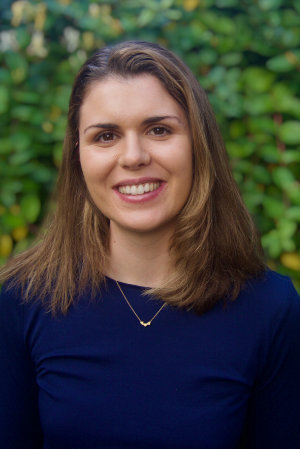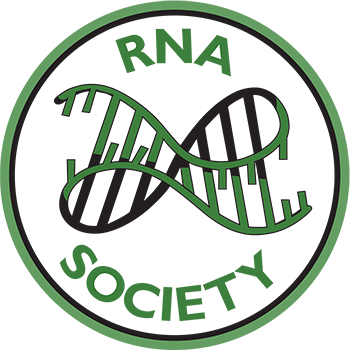Dr. Alex SneddonWritten by: Dr. Paula Petronela Groza Posted: September 11, 2025  A dance between machine learning and biomedical applications, that touches lives of chronic pain patients around the world - this best describes the journey that Dr. Alex Sneddon, a postdoctoral researcher within the Australian Research Council’s Centre of Excellence for the Mathematical Analysis of Cellular Systems (MACSYS), has followed so far in her professional life. Early on, her ambition and determination became obvious when she pursued two bachelor's degrees: one in Engineering (Biomedical, Honors) and one in Science (Adv) with Computer Science from the University of Sydney, Australia. During this time, she developed her skills in software engineering and biomedical machine learning by undertaking two internships at Google and a summer research scholarship at Data61, part of Australia’s Commonwealth Scientific and Industrial Research Organization (CSIRO). She started a job in industry during her final semester of undergraduate studies working as a software and systems engineer at Saluda Medical, a company developing the first closed-loop neuromodulation implant for the treatment of chronic pain. This work ultimately convinced her to enroll in a PhD program at the Australian National University (ANU) in Canberra, Australia: “(...) ultimately [I] felt like the most exciting phase of work at that company would have been in the initial conception of the early-stage technology in a research environment. This is what drove me to seek to do a PhD.” Dr. Sneddon started her PhD in the lab of Prof. Eduardo Eyras with proposed work on nanopore sequencing “to analyse RNA molecules in their full length directly from raw electrical signals.” She fondly recalls that “(...) it was the exciting potential of this technology and a sense of a friendly and productive culture in the Eyras group that solidified this choice.” Her work exploiting domain knowledge for nanopore signal analysis using neural networks sparked Dr. Sneddon’s fascination with RNA, an interest that has grown ever since. Currently, as a postdoctoral researcher, she is “developing computational methods for molecular characterisation and design, specifically RNA, using neural networks informed by biological knowledge.” Dr. Sneddon is very enthusiastic about “the exciting opportunity to work in an interdisciplinary research environment with diverse researchers across Australia, spanning computational, mathematical, and biological domains, to work towards making biology predictive and programmable.” Her research intertwines machine learning and molecular biology “to enable data-efficient, generalisable, and interpretable machine learning for molecular characterisation and design.” A challenge in this field, she notes, is that “while there continues to be significant growth in biological datasets for data-driven training of machine learning models, for many open biological problems, the amount of data remains insufficient for training neural networks at scale, which is why it is important to develop innovative ways to incorporate biological knowledge as a model prior.”
Dr. Sneddon’s path through her PhD was marked by significant challenges, including two project changes due to the pandemic, a lack of compelling results, missed opportunities to attend conferences due to travel bans and the pressure of a strict 4-year deadline- all of which at times made her feel like she was falling short. Yet rather than succumb to the pressure, she channeled it into building a self-motivational system: “setting a goal at the start of each week for the work I wanted to complete, which drove the focus of my time and effort (...) and made the work feel much more manageable, ultimately allowing me to finish my PhD in 3 years”. She generated an innovative idea that became a major achievement: “Knowing that in direct RNA sequencing, the RNA molecule is sequenced from the 3’ end first, and that the 3’ UTR in mRNAs contains common sequence patterns, I wondered if it would be possible to distinguish mRNA from non-mRNA from nanopore signals. This was also the time that adaptive sampling (selective rejection of molecules during sequencing) with nanopore technology was emerging, so I wondered if it would be possible to combine these ideas for selective rejection of mRNA (...) to focus sequencing on rare RNA types, so testing these ideas was a really exciting time.” This work resulted in her first first-author journal article and talks at international conferences on nanopore sequencing (London Calling 2022), computational biology (ISMB 2022, APBJC 2024), and RNA (RNA Society Annual Meeting 2023). Attending her first international academic conference, ISMB 2022 (Intelligent Systems for Molecular Biology) in Madison, Wisconsin, was a defining moment of her career. “It was the first time in my PhD that other people's research felt accessible to me.” There, she met one of the iRNA track organisers, Prof. Yoseph Barash, who generously shared his own experiences of moving from computer science to computational biology and what led him to pursue a postdoc. Talking with him made her reflect on her enjoyment of learning and opened her mind to considering a postdoc rather than returning to industry: “I’m grateful to Yoseph for his encouragement and openness, as it turned out to be a pivotal moment in my career.” At the RNA Society Annual Meeting 2023 in Singapore — her favourite meeting — Dr. Sneddon delivered a plenary talk on her technology, RISER, which “can now be used for selectively rejecting the abundant messenger RNA and mitochondrial RNA classes during nanopore sequencing, to increase the sequencing depth of less abundant RNAs such as long non-coding RNAs (...) that do not share 3’ ends with mRNAs, and to deplete globin mRNA from whole blood samples to increase the sequencing depth of other RNAs of interest.” She remains grateful for this experience: “[it] was an extremely nerve-wracking, but rewarding experience and allowed me to meet lots of interesting people (...) and to share my work with the international RNA community.”
Prof Eduardo Eyras, who was Dr. Sneddon’s PhD supervisor, was a major source of inspiration. “[He] has created a research group with a large diversity of backgrounds, experiences, and interests, which makes for interesting discussions and brainstorming sessions.” Prof Eyras taught Dr. Sneddon to value her past experiences in other fields and view them as a strength that allows approaching problems from novel perspectives. She also finds inspiration in the unique approaches each member of this blended group brings to their work. Encouraged by these daily sources of motivation and support, she actively extends her efforts beyond the lab, engaging in diverse programs and projects that promote women in STEM and science communication. For the past seven years, Dr. Sneddon has mentored girls and women in STEM through various programs: Curious Minds (run by the Australian Mathematics Trust and Australian Science Innovations) and the National Youth Science Forum for high school students; mentoring undergraduate female engineers at The Women’s College within The University of Sydney; and supporting PhD students at The John Curtin School of Medical Research, ANU. Her passion for science communication led to an invitation to join a Theo Murphy Initiative project funded by the Australian Academy of Science, for a conference on AI in Science for Early and Mid-Career Researchers (EMCRs). Within this project, she led a working group that organized EMCR rapid-fire talks, providing researchers with training in communicating science to a general audience: “an important skill for scientists that is not typically cultivated through standard academic conferences, which have a more technical and discipline-specific focus.” Her favorite RNA journal paper “came out of the Shine-Dalgarno Centre for RNA Innovation here at ANU, by Marco Guarnacci and Thomas Preiss, titled ‘The je ne sais quoi of 5-methylcytosine in messenger RNA.’ They provide a very nice review of the emerging evidence for the role of m5C modification in mRNA, including the state-of-the-art measurement technologies, the role of relevant enzymes, as well as functional implications. Given the rapid acceleration of the epitranscriptomics field, reviews like these can help with keeping across the literature.” She is also grateful to the RNA Society for “their amazing support of junior scientists!” She was “fortunate to receive funding to attend ISMB 2022 and the RNA Society Annual Meeting 2023 and also participate as a mentee in the RNA Society mentoring program.” The benefits she has gained through these experiences have been huge, both personally and professionally — so, “thank you to those who put the time and work into organizing these activities!” You can connect with Dr. Sneddon on X @alex__sneddon and LinkedIN (https://www.linkedin.com/in/alex-sneddon). |
